
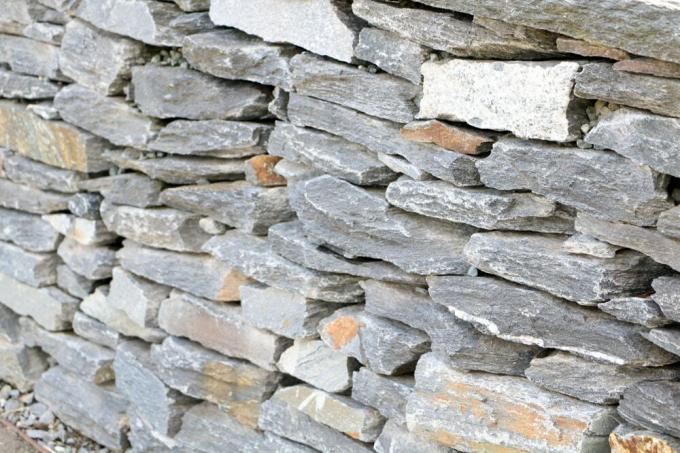
Table of contents
- retaining wall
- Retaining wall made of plant stones
- Instructions
- lay foundation
- set plant stones
- planting
- alternatives
- gabions
- wooden palisade
- drywall
- L stones
- terracing
- planting
- embankment mats
- Security
Slope reinforcement is a must in many a garden. Whenever the garden includes a slope or an embankment that does not or only with a great effort can be eliminated, sooner or later the question of protection against the slipping There are a few ways to do this. The classic, however, is undoubtedly the massive retaining wall made of stone.
retaining wall
The best way to secure a slope, a hill or an embankment safely and reliably is to build a retaining wall and foundation. It offers the best conditions for being able to withstand very high pressure. Anchoring in the ground on a foundation is particularly important. Because of this construction, the wall can be crushed far less easily by the masses of earth. A retaining wall is usually built from conventional natural stones. More practical, on the other hand, is the use of so-called plant stones, which, as the name suggests, can be planted and thus bring even more green into the garden.
In general:
The larger the mass of soil and the steeper the slope, the more massive the wall must be.
Retaining wall made of plant stones
Plant stones are building elements that are cast from concrete. They have a cavity that is easy to fill with soil. Plant stones are commercially available in ring form or as rectangular boxes. Depending on the manufacturer, they have toothed elements on the sides with which they can be connected to one another.
Tip:
When buying plant stones, make sure that they can be interlocked laterally. This provides additional stability and usually saves annoying masonry work.
Plant stones are also available in different colors and designs. Their great advantage, however, is that they adapt individually to the basic course of the slope or the terrain. adjust to the slope. They are also much easier to process. Since erecting a retaining wall involves a lot of work, you should do everything you can to not make the whole thing unnecessarily difficult. In any case, plant stones make wall construction much easier.
Instructions
Admittedly, the construction of a retaining wall from plant stones is complex, but in principle it can also be carried out by laypeople. Above all, however, for the work on the foundation and for concreting the base of the wall nevertheless, a professional should be consulted to avoid possible errors in this very sensitive area avoid. In order for the project to succeed reliably, good planning is required. This planning also includes taking the so-called slope water into account. This is meltwater or rainwater that flows down the slope. It must be intercepted and drained off by means of a drainage system behind the wall. Without drainage, there is a risk that water pressure or winter frost will sooner or later damage the retaining wall. Before you start with the actual construction work, a drainage must first be created.
lay foundation
A retaining wall is only really stable if it rests on a solid foundation. In order to lay a foundation, it is first necessary to dig a trench along the slope. A distance of around 50 centimeters from the slope is recommended. The following must be taken into account:
- Trench depth 60 to 80 centimeters
- Fill up the ditch from below with a frost-proof gravel-gravel mixture
- Filling height: 30 to 50 centimeters
- Pour concrete up to a thickness of 30 centimeters
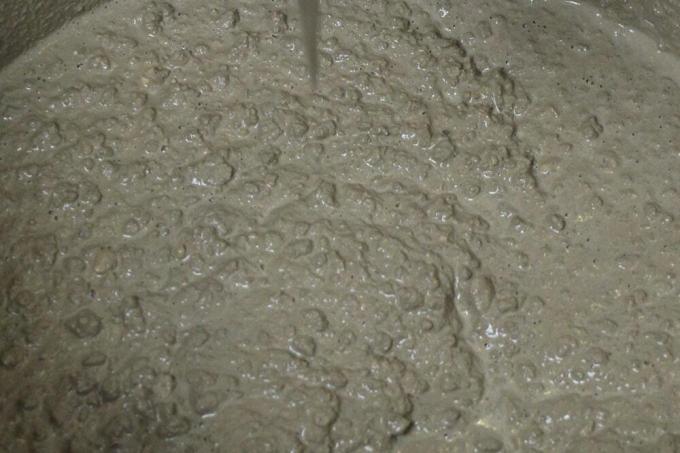
The concrete foundation should be about five centimeters wider on both sides than the plant stones that will later be placed on it. In addition, space must be left behind the foundation for drainage. This is best done by laying drainage pipes. The pipes should rest on a layer of gravel to protect them from frost.
set plant stones
Once the concrete of the foundation has hardened, you can start placing the planting stones. The first row of stones is placed on a layer of mortar to connect them firmly to the foundation. The free space between the stones and the slope is filled with gravel. It must be thoroughly compacted, otherwise the protective function could suffer. The stones themselves can also be filled with gravel or filled with a mixture of gravel and sand. Alternatively, you can already use potting soil here. If the mortar on which the first row of stones sits has dried out, the other rows can be set. It is important to always place them offset towards the slope. The stones in all other rows are also filled. The number of rows of course depends on the planned height of the wall - and this in turn depends on the size of the slope.
A notice:
The plant stones must lie exactly horizontally. It is therefore advisable to check their position from time to time with a spirit level and to adjust it if necessary.
planting
One of the advantages of planting stones for slope stabilization is that they can be planted. Plants that are relatively undemanding are particularly suitable for this. It is also recommended to cover the soil in the stone with a layer of gravel or mulch to protect it. Planting makes it possible to set visual accents in the garden. The retaining wall is not only very functional, but also an eye-catcher.
alternatives
Anyone who shys away from the high effort associated with building a retaining wall and, above all, laying a foundation, can fall back on various alternatives. With these, a slope can basically be fixed. However, they all do not offer the secure protection that can be achieved with a solid retaining wall. However, they are always good for stabilizing hills, embankments and other height differences in the garden.
gabions
Gabions function in a similar way to a wall in connection with slope reinforcement. In a way, they represent a kind of barrier that is supposed to stop the soil that has started to slide. In order for this to really work, they must have a high degree of stability. Heavy stones inside the lattice cage of the gabion therefore ensure that they can only be moved with a great deal of effort.

A stabilizing foundation, on the other hand, is completely missing and is usually not necessary. The great advantage of gabions is certainly that they can be removed relatively easily if necessary.
wooden palisade
A wooden palisade made of round beams driven into the ground ultimately fulfills a wall function. It gains in stability because a certain part of each individual beam is stuck in the ground. Wooden palisades for slope stabilization certainly have a special visual appeal. However, they are not permanently weatherproof and sooner or later have to be replaced again and again.
drywall
A dry stone wall is a wall in which the stones are not fixed with mortar, but simply stacked and wedged together. Natural stone is usually used for this.
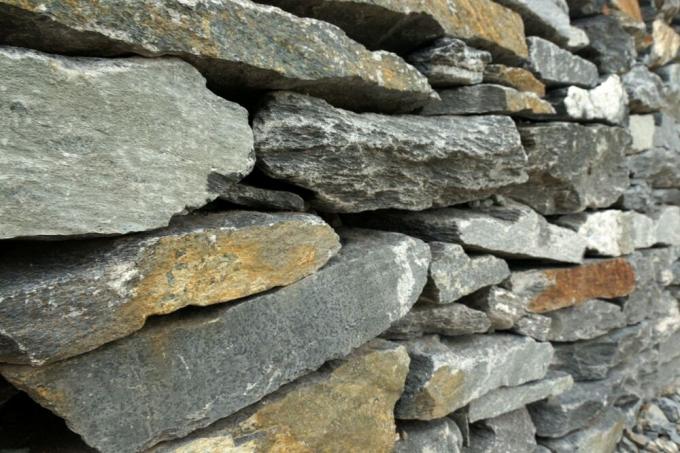
L stones
L-stones are so named because they are shaped like the letter "L". They can also be used to build a retaining wall for slope stabilization. The shorter side of the cast stone comes to rest on the ground, the longer one at the foot of the slope. There is no separate anchoring of the stones.
terracing
In principle, a slope or an embankment can also be stabilized by installing artificial terraces. However, this usually also means that higher surfaces must be additionally supported. In addition, the terracing is extremely complex.
planting
One of the most common triggers of a landslide is erosion. A slope or an embankment should therefore always be planted to protect the soil underneath. The roots of the plants in particular fulfill an important function. The following applies: Deep-rooted plants are better suited than less deep-rooted ones. The deep anchoring of the root system in the ground stabilizes the surface and thus prevents slipping to a certain extent.
embankment mats
Embankment mats, mostly made of coconut, are actually only suitable for faster protection of a freshly heaped embankment. They are laid on the ground over a large area before planting, before the embankment is planted. Their special structure then ensures that plants find a better hold. The mat can also help hold the surface together, at least for a period of time.
Security
The danger that can emanate from a landslide should not be underestimated. Depending on the situation, this can result in enormous property damage and a lot of trouble. A slope reinforcement is therefore not a luxury, but a clever precautionary measure. Under certain circumstances, it can even be made a requirement by the municipality or the state building insurance. Speaking of the municipality: Anyone planning to build a retaining wall should inquire in advance with their municipal or city administration whether they need a building permit and, if in doubt, obtain this.
 garden editorial
garden editorial I write about everything that interests me in my garden.
Learn more about gardening of all kinds
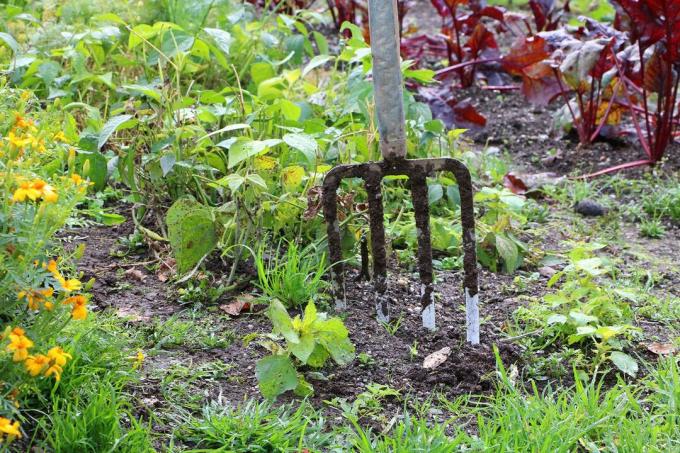
Laying out a garden – you should observe these guidelines
A well-kept garden is a real eye-catcher that enhances the house and property even more. When buying a new property or for seasonal renewal, the garden is designed with many new ideas and concepts. This can be quite expensive if not planned properly. Our article wants to show you how to create your new […]
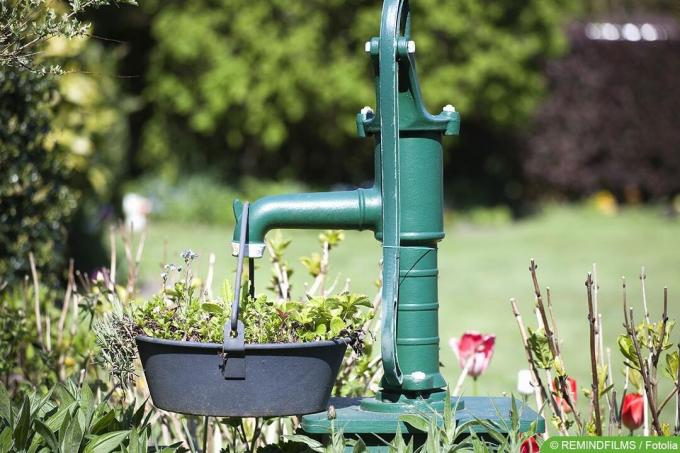
Find water veins: At what depth does groundwater come?
A well on your own property must be connected to the groundwater. It is not always clear where this is located. Luckily, there are several methods that you can use to reliably track down a "water vein" to take advantage of the water source.
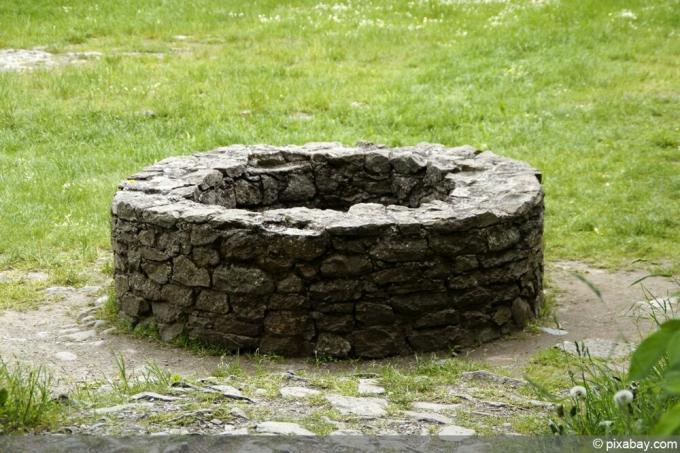
Build your own dowsing rod DIY instructions
Dowsing rods have been a working method for finding water and other things in our environment for centuries. With little effort, you too can easily make your own dowsing rod - with our instructions.
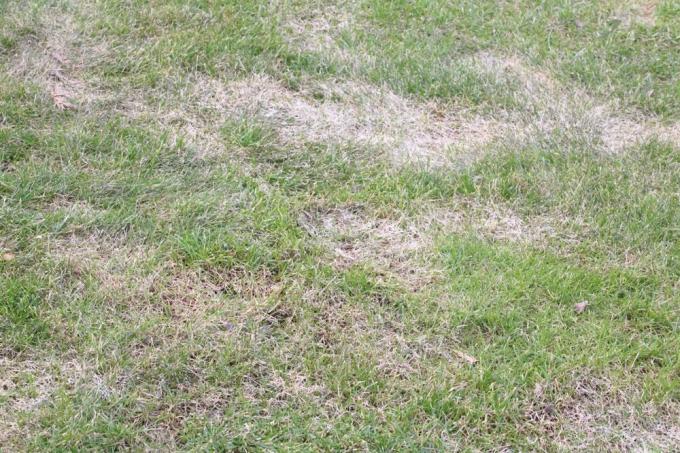
Lawn pavers: how does lawn repair work?
Bald spots or gaps in the lawn are a thorn in the side of many lawn owners. However, overseeding is considered to be tedious work. Relief should Provide lawn pavers that combine many work steps in one.
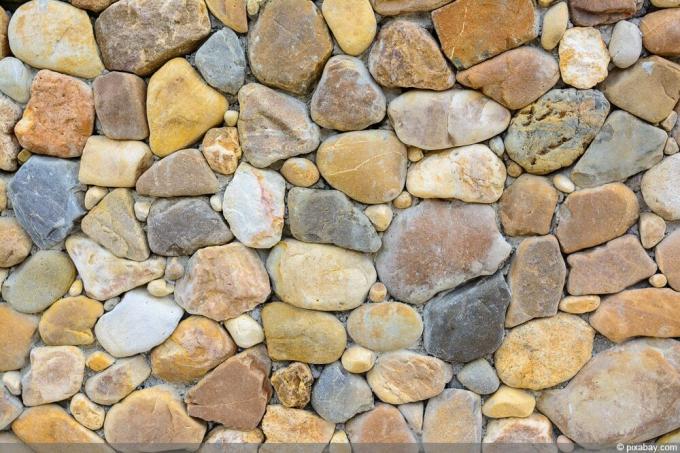
Build a Frisian wall yourself | Costs for a Frisian wall
The Friesenwall is used to separate gardens and flower beds from neighboring properties. It is aesthetic and offers a living space. The costs you will incur depend on the material you have chosen. Choosing DIY will save you money on labor.
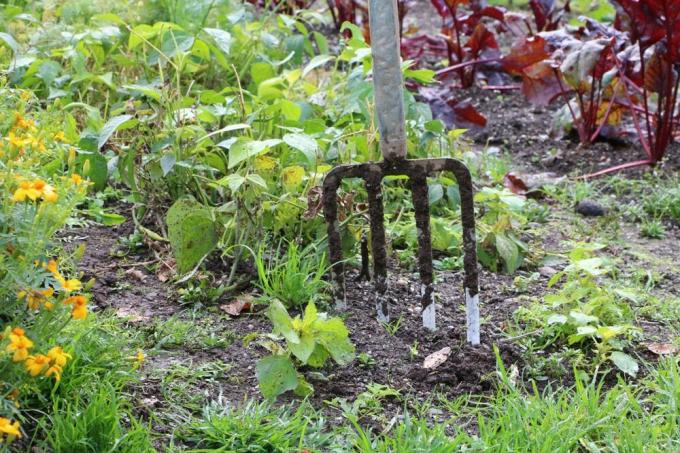
Improve your income with gardening - is that possible?
If you put a lot of time, energy and love into your garden and this then also brings the corresponding successes in the form of a rich harvest shows, you can get the idea of whether you can improve your income with your gardening. We show what you should consider, what pitfalls there are and what opportunities you can offer.



